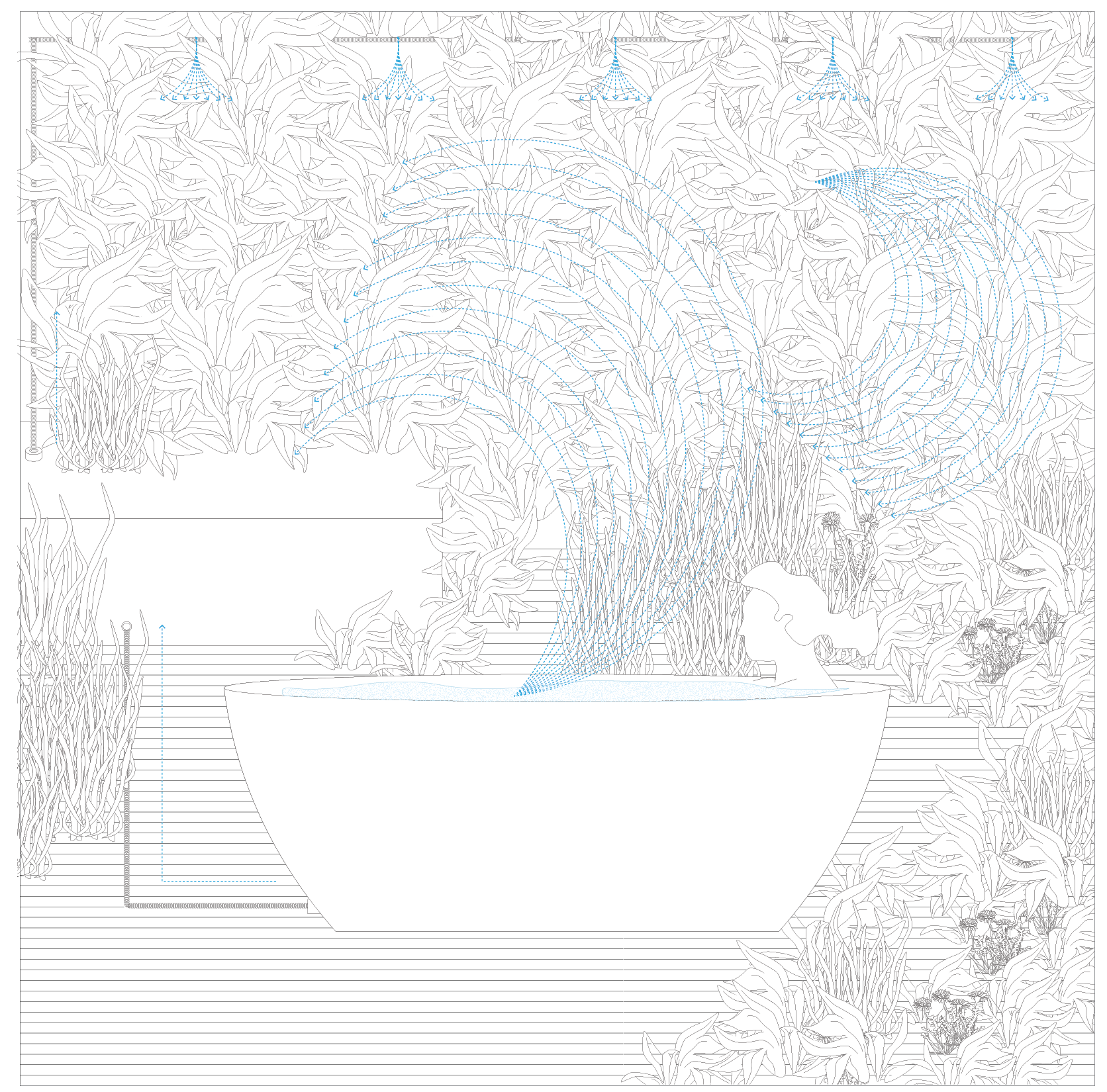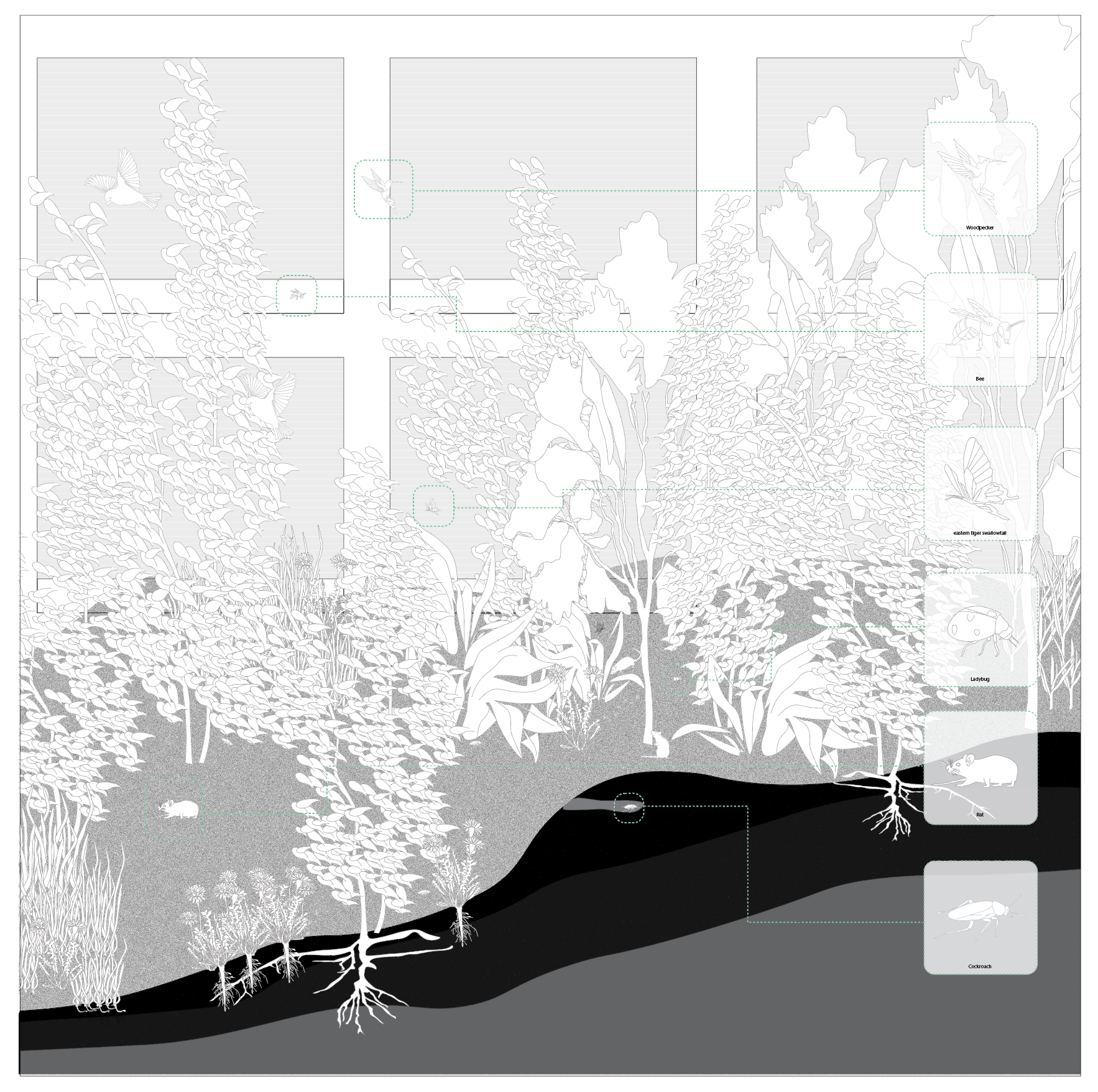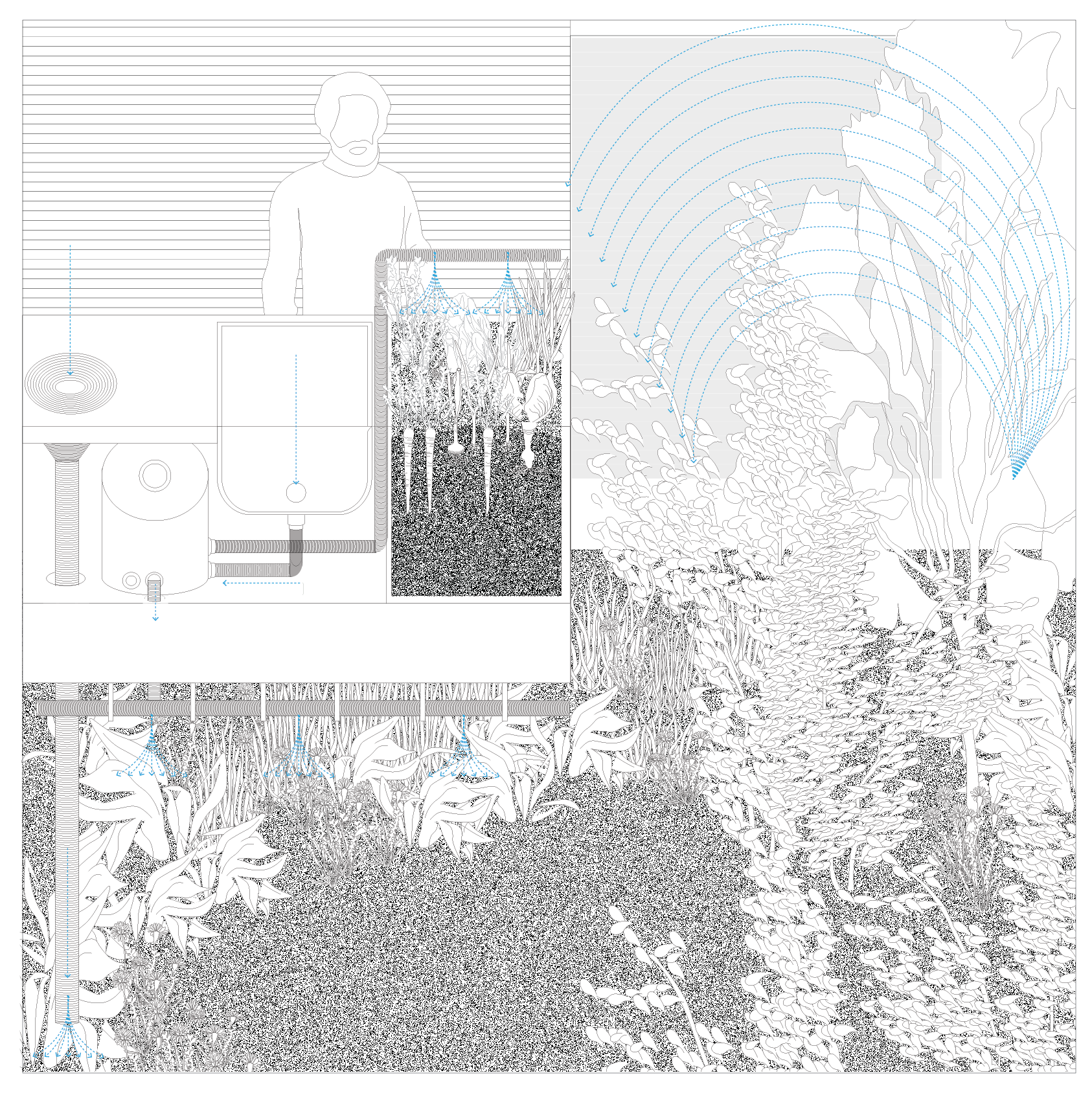



I am interested in a world where the profession of architecture regards plant habitation with the same importance as human habitation. What would such a world look like if plants became equal inhabitants alongside humans?
In dense urban environments like Manhattan, many people have lost or never created a connection to the wide variety of living species the world has to offer. This disconnection is largely due to urbanization, historically driven by the need to protect dense populations, optimize pedestrian and vehicular movement, and manage the circulation of water, waste, and other resources critical to human life. As a result, green spaces have become scarce.
However, there are already multiple ways to introduce green spaces into the built environment—examples include living wall structures, living roof systems, and greened atriums. These approaches have gained increasing popularity as cities begin to recognize the importance of green spaces for the well-being of individuals. As more people place value on living near parks and greenery, these spaces are being recognized as a valuable commodity, often only accessible to those with the economic means to afford it. This creates a socio-economic divide.
I believe architecture has the potential to address this issue by fostering a deeper, more entangled relationship between humans and plants in urban environments. My work seeks to bring us back to nature by developing a system that embraces the idea already practiced by indigenous tribes for centuries: seeing plants not as foreign entities, but as willing partners in an intimate and reciprocal relationship.
My project focuses on innovating a new model for living, where plants coexist within human living spaces and become deeply integrated into building systems. This approach adopts a systematic strategy that minimizes waste and transforms domestic spaces into biological machines capable of filtering, processing, and recycling what we traditionally consider waste.
By introducing plants into the building sector in unconventional ways—housing them alongside humans in the same rooms or even buildings—this model challenges conventional thinking. Plants are not passive objects or decorative elements; they can become living companions and essential protagonists in the built environment.